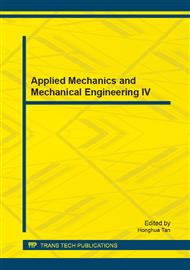p.563
p.569
p.575
p.582
p.589
p.595
p.601
p.608
p.614
Research on Application of Non-Equilateral Angle Steel for Transmission Towers
Abstract:
In Chinese transmission towers, all the steels are equilateral angle, most of the diagonal and secondary members are in one-sided bolt connection working condition, so the force is eccentric. When the length within a certain range, relative to the equilateral angle, non-equilateral angle steel under this working condition to be able to withstand a larger load, and the ability to cross-sectional area smaller, reducing the weight of the whole base tower. In order to solve the above problems, through research and analysis of large-scale finite element software ANSYS diagonal and secondary members for transmission tower angle steel model length which can be equilateral angle replaced non-equilateral angle steel. Eventually found that when the length is small long side is connected to non-equilateral angle steel are available, and when the length is bigger short side is connected to non-equilateral angle steel are available.
Info:
Periodical:
Pages:
589-594
Citation:
Online since:
October 2013
Authors:
Price:
Сopyright:
© 2014 Trans Tech Publications Ltd. All Rights Reserved
Share:
Citation:


